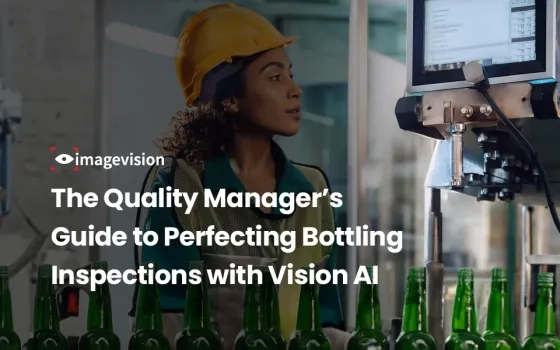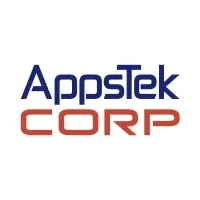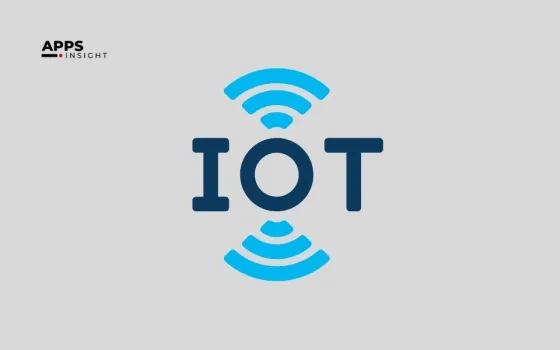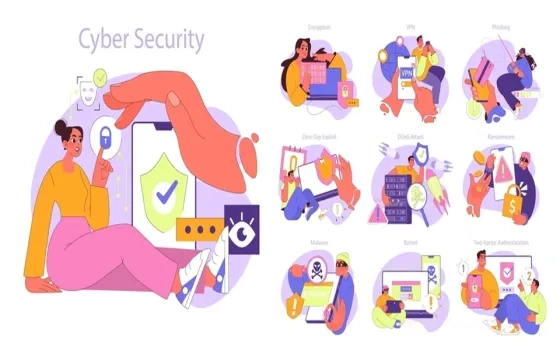Since March, life as we know it has been upended rather harshly. Businesses are facing unprecedented challenges today but leaders believe this is a time for change, and meaningful innovation. Raghuram Joshi, Senior General Manager, Cloud & IoT Implementations at Robert Bosch Engineering & Business Solutions talks about the renewed vigor in virtual Business Process Continuity, the need for digitization across the spectrum especially for SMEs and MSMEs, and how new-age innovators have to spend a considerable time on a proof of concept before approaching a large enterprise to partner with. Read more

Welcome, Raghu, first thank you for taking your time and talking to us on the important topic of Digitization and the steps to achieve that. It is wonderful to have you and looking forward to hearing your thoughts on this. Let me begin to inquire about you and everyone around you are safe and healthy?
Yes sure, things are getting better. Safety and health of family and friends is top on the agenda. Current situation has created a time space that was usually consumed by travel and we have some time to think about our personal health as well.
Wonderful, I particularly like the use of extra “Time Space” to focus on personal health. Professionally, what were your experiences during last couple of months?
People are getting used to the new ways of working and accepting the fact that there would be prolonged period of time when face to face connect would be less frequent. Initially, there were issues in even simple matters like getting everyone onboard for a call. Effectiveness of discussions beyond the routine – brainstorming, thinking through ideas and white boarding, was a bit constrained. Connectivity that was taken for granted in an enterprise environment. However, teething issues have been sorted out mostly and the BCP (business continuity plan) for the entire IT industry, now working mostly remote, seems to be working well. That surely was a concern if thousands of people working remotely and still meeting delivery expectations and rigor would be sustainable over a longer duration. Now we are here and things are reasonable fine.
Yeah I agree, the lockdown surely made us realize how important the connectivity and BCP is. IT and ITES are the digitally enabled enterprises were affected but compared to manufacturing etc, what lessons do we learn from this?
I would say, Impact was cushioned to a good extent as most of the enterprises invoked BCP and were fairly successful for offshore activities. However, travels that are an essential part of project execution were impacted.
Organizations with a global outlook and presence, – those organizations with delivery centers distributed across talent hubs were able to adapt better.
At an operational level, new models of IT supports, especially those to address hardware failures at employee locations brought out local innovations. Also well established processes within an organization were tested and in many cases reviewed and adapted. Much talked about fundamental organizational cultural aspects of flexibility and adaptability to change came to fore.
In short, the distributed and connected nature of a team helped you to cushion the impact. Having seen that an event like this can bring the whole world on knee, the digital transformations now is at center.
In fact the need for digitization is stronger now than ever in the past. Alternatives to current challenges of collaboration and communication are mainly coming from digitization. Be it new mode of digital communication through platforms or remotely accessible IT systems. This has also lead to increased interest in using Cloud for core organizational processes like engineering and in the manufacturing sectors it is how we see the digitization of the machine and process.
I can’t agree more on the need for digitization, how do you think a traditional manufacturing or SME’s should prepare to such events in future?
SME sector is the one that has been impacted and for an economy like India they play a significant role not only for production but also for employment generations.
Most of them are still the legacy system and they are doing their best to estimate demand, inventory management, raw material and resource availability. Outlook is mainly from a perspective of short-term demand management rather than mid to long term. This leads to uncertainty and volatility through the supply chain often influencing overall efficiency and transparency. Technology can be leveraged and can be used to navigate these uncertainties.
While there have been some experiments, adoption has been much to be desired. Of Course, the fact remains that priorities are quite different, cost of digital adoption need to be factored in and talent to drive digitization is still not common.
Great so, digital transformation is the key for the manufacturers and how does one go about it?
Introducing digitization and thereby connecting existing machines and equipment is a typical challenge of dealing with legacy systems. The issue gets compounded by the fact that we are operating not just at software levels but understanding of the domain, processes and ecosystem play an equally important role. There is rarely a case of ‘one solution fits all’ and implementing it at a wider scale is an effort and cost intensive venture.
While the problem looks overwhelming, the solution lies as well in focusing on the basics. Of course, defining the problem statement in the digitization journey is a good starting point – What really are the priorities? Productivity, quality, time to market or some other ones.
While it is important to have a comprehensive blueprint for digitizing the manufacturing setup, a step-by-step approach to running prototypes, followed by localized implementation and finally a rollout. Having said that, it is also true that there are already really good cases that have graduated to industrial grade like those in monitoring, compliance and logistics
I like the phrase, “a step-by-step approach to running prototypes” which eventually means , PoC’s (Proof-of-Concept) seems to be like a litmus test and viable options for everyone including the digitally naïve.
Yes exactly, PoCs are good way to test the hypothesis and get hands on experience what Digitization will lead to plus it acts as catalyst to propose internally for final roll out.
So, Raghu how does one choose a PoC partner?
Confluence of technologies ranging from IoT, AI and AR/VR makes a very exciting and alluring preposition in the wider scope of manufacturing related implementations.
One has to accept, however, that some of these technologies are still evolving and may need more maturity and customization to be adopted in an industrialized scenario. It is therefore pertinent that choice of partner is a very important decision.
Building PoCs is highly consultative approach involving extensive experimentation together with the customer. An understanding of not just the technological possibilities but also domain expertise and experience, a lineage of successful technology adoption into mainstream and deep understanding of wider industry ecosystem are some of the factors that need to be considered while zeroing on a partner.
I agree, we are dealing with complex technologies and complex processes. What is the typical time frame for each PoC?
Typically most of the time goes into defining the problem statement and validating if the current investments could be leveraged to reach the desired objectives.
Once the hypothesis is validated, the technical PoCs typically take 4-6 weeks to put together. One has to bear in mind however that in most cases, PoCs are quite a distance away from actual scale implementation. I would also recommend that an adopter tries more than one way to solve, so try with a few PoCs from different startups/innovators to choose what fits them.
In this phase, ability of the partner to explore diverse technology and bring together varied partners on the solution plane determines the success of such endeavors.
One good example is the IoT Garage from Bosch which endeavors to not just offer a technology exploration platform but also leverages strong partnership with industry bodies like NASSCOM CoE IoT & AI, university connects and start-ups.

Caption: The Bosch IoT Garage inaugurated by senior leaders of Bosch & NASSCOM CoE IoT
Great, can you summarise what exactly the POCs Factory has to offer?
We have setup IoT Garage for experimentation, PoCs and building MVPs. This brings together technology and domain experts to work of problem statements. We assist our customers and partners in building a technology PoC to address the stated business problem.
Sometimes our customers ask us to help them with scaling up and industrialization. Our solution expert team supports these requests in moving MVPs (Minimum Viable Product) to industrial implementations.
We run numerous digital solutions regularly and are glad to share our experiences and best practices.
Okay, that is very exciting as anyone who wants to validate their hypothesis can approach PoC Factory and get the it done in 4-6 weeks. Once the POC is done, what next?
It is quite normal to have multiple iterations of PoC cycle leading to MVP if firstly relevancy of digitization for the use-case and business problem hypothesis is validated. Industrialization, that is, moving from a functioning MVP to a scale solution is the next step.
This involves architectural considerations right from UX, technology adaptations, Cyber Security, Data Analytics and Visualization. Rarely these solutions exist in isolation.
Integration into existing enterprise IT landscape is a key requirement. Inability to integrate with Enterprise Systems leads to many questions around ROI.
Thank you Raghu for your time and sharing your thoughts on broad digitization topics. I take following things with me
- Digitization will help to cushion the impact in uncertain situations
- The journey to digitization is progressive one and PoCs are very integral part of it
- The choice of the technology partner is key as digitization is very cross-functional and cross-domain sphere
This is part of our ongoing series TechVoice, where we bring to you the leaders of the industry talk about the latest in innovation, technology and trends in their industry sectors. If you want to contribute, write to sindhuja@nasscom.in
For more updates, follow NASSCOM CoE IoT-DSAI on LinkedIn, Twitter, Facebook, and Youtube











![[Part 2/2] : Innovating Care: How HealthTech Startups Are Reshaping The Present and Future of Indian Healthcare](https://community.nasscom.in/sites/default/files/styles/560_x_350/public/media/images/ai-generated-9106907_1920-edited_0.jpg.webp?itok=xWs8wsoD)

![[Part 1/2] : Innovating Care: How HealthTech Startups Are Reshaping The Present and Future of Indian Healthcare](https://community.nasscom.in/sites/default/files/styles/560_x_350/public/media/images/ai-generated-9106907_1920-edited.jpg.webp?itok=fJ3Yrln6)




